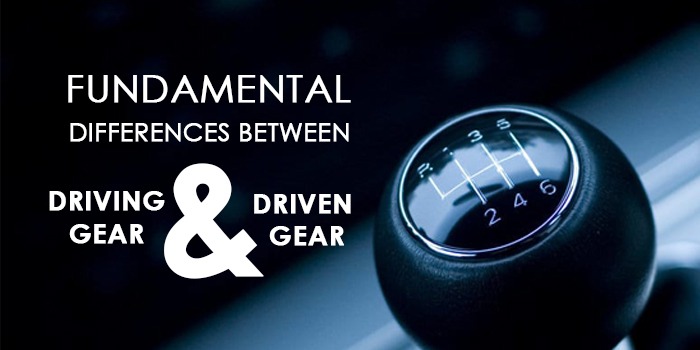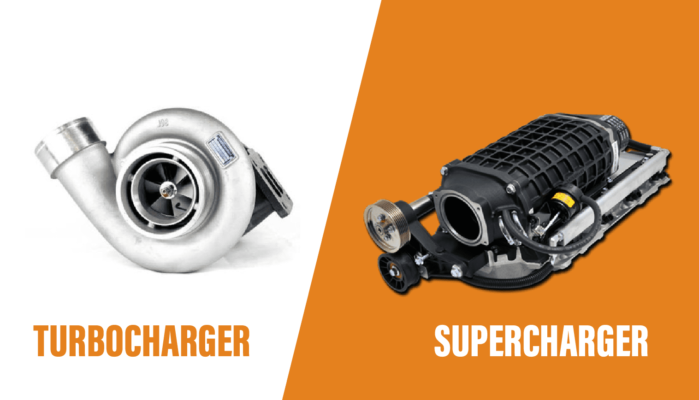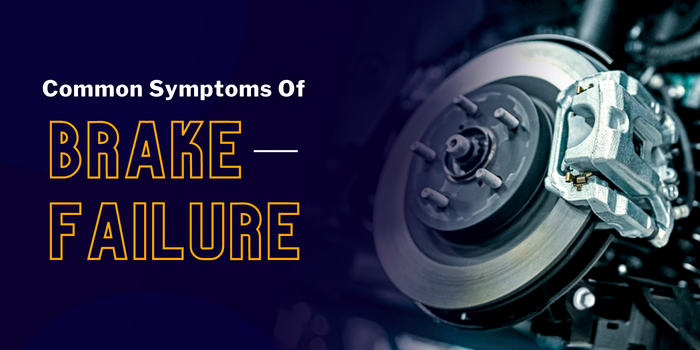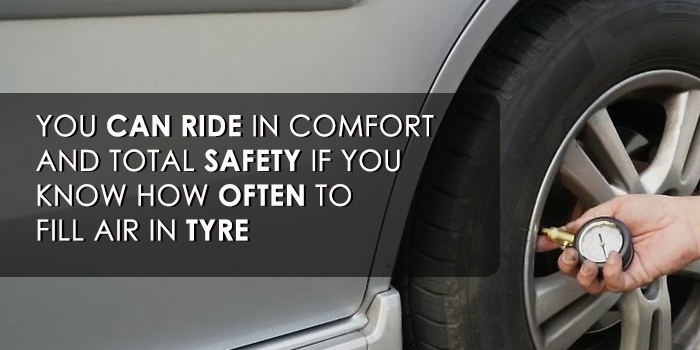
Gears are toothed wheels that transmit force to other gears by meshing with minimal slip between them. Two gears that mesh together are not the same size. The driven (smaller) gear is known as the pinion. The fundamental difference between driving gear and driven gear is that the driving gear transmits the force, while the receiving gear is called the driven gear.
If the pinion gear is the driving gear, it results in a step-down drive where the output speed decreases but the torque increases. Similarly, if the larger gear is the driving gear, it is known as a step-up drive where the overall output speed increase and the torque decreases.
Driving gear and driven gear
The gear that supplies the driving force is known as either the driving gear or the driver. The gear which receives the force is known as the driven gear or is sometimes called the follower.
The driving gear or driver is attached to a source of mechanical power such as an electric motor or internal combustion engine. The driven gear or follower is attached to the output shaft where this mechanical force is transmitted to the wheels of the vehicle, through a series of other shafts or gears.
Driving gear and driven gear form part of a mechanical system. The mechanical power from an engine, turbine or electric motor is transmitted to a driven component in the machine. The output speed and torque can be varied by using different sizes of driven gears and driving gears. Different configurations of gears will increase or decrease the rotational speed of the output shaft.
Also Read Know Where Is The Clutch Located In Car And Bike
What are the different types of gear and gear drives?
There are six different types of gears depending on the orientation of their axes. There are spur gears, helical gears, double helical gears, internal gears, rack and pinion and straight bevel gears.
Spur gears
These are the simplest type of gear. They have their gear teeth parallel to the gear axis. Spur gears are generally used to transmit a force between two parallel shafts. These types of gears have high efficiency and high precision rating. They are most often used for high-speed applications with high loads.
Helical gears
Helical gears are used in applications that have parallel shaft drives. The gear teeth are inclined towards the axis. Helical gear teeth are longer than spur gear teeth. They have a higher contact ratio (a higher number of teeth are in contact with each other). These types of gears have higher capacity and can operate smoothly with less noise.
Since helical gears are inclined, they generate axial forces in addition to radial and transverse forces. Bearings tend to wear out faster with helical gears. Bearing life can be increased by using multiple step configurations by alternating the inclination of helical gears on the same shaft.
Automotive applications utilize helical gears in their transmission systems (gearbox and drivetrain).
Also Read The Use Of A Gearbox In A Car. Different Types Of Gearboxes.
Double Helical gears
Driven gear and driver gears can be of double helical type. They are used in power transmission between parallel shafts. Their gear teeth consist of two opposing helix angles. Axial loads are nullified with double helical gears.
Helical gears can withstand heavy loads but their complicated manufacturing makes them more costly than other types of gears.
The gears are used in cement mixers and crushers.
Internal gears
Internal gears have their teeth placed on the inner periphery. They can be used to transmit forces between parallel shafts. Internal gears are used in planetary transmission systems of automotive gearboxes. They are also used in cement mixers and windmill transmission systems.
Rack and Pinion gears
This is a linear type of gear. The rack is a lengthwise gear while the pinion is circular and meshes with it. Gear teeth can be of spur or helical type. Rack and pinion gears are used to convert circular motion into linear motion.
Lathes make use of rack and pinion gears in their carriage system. This type of gear system is also used in automotive steering mechanisms.
Straight bevel gears
These gears are used for transmitting power through shafts at intersecting angles, most commonly at right angles.
Straight bevel gears are used in automotive axles for the differential system.
Worm gears
Worm gears comprise a worm wheel paired with a worm gear. The worm wheel is typically a cylindrical gear while the worm gear is a screw-shaped gear. Worm gears are used to transmit power between non-parallel shafts (non-intersecting shafts). High gear ratios can be attained with these gears and speed reduction is possible. Worm gears offer quiet and smooth operation.
Gear axes and their configuration
Gear axes refer to the orientation along the shaft on which they are installed. The gears rotate around the shaft in relation to each other. The three configurations in gear orientation are:
Parallel
The gears are placed around parallel axes in the same plane. The rotation of the driving shaft (driving gear) and the driven shaft (driven gear) are in opposite directions. Spur gears can be used in this application.
Non-parallel (Non-intersecting)
Gears are placed on non-parallel shafts which are non-intersecting and not in the same plane. Worm gears can be used in applications with non-parallel (non-intersecting shafts).
Intersecting
The gears are placed on intersecting shafts within the same plane. Bevel gears are used in this application.
Also Read Car Interior Parts Names – The Ultimate Car Parts Glossary
What are gear drive advantages and disadvantages?
Here are some of the advantages and disadvantages of gear drives as compared to belt drives and chain drives. All these systems are used for power transmission to transfer mechanical force from one shaft to another by engaging its teeth.
Gear drive is advantageous as compared to belt or chain drive because power transmission by gears has almost 100% efficiency.
Gear drive advantages
- Gears are a positive drive hence output velocity remains constant
- Changing output velocity can be achieved by using a gearbox (multiple gear trains on a single shaft that mesh with other gear trains)
- The efficiency achieved with gear drives is very high. 100% efficiency can be achieved with gear drives
- Gear drives can be used for low-speed applications
- High torque values can be transmitted with gear drives
- Construction is compact and suitable for automotive applications
Gear drive disadvantages
- Gear drives are not suitable when there is a lot of distance between shafts
- The system gets noisy and is prone to vibrations at high speed
- Lubrication is required for smooth operation and the system has to be maintained
- Gear drives do not offer much flexibility
Also read Tips To Increase Car Mileage Instantly: Shoot Up Mileage
Reasons for gear and gear drive failure
The possible reasons why a gear and gear drive may fail could be due to abrasive wear. Driven gear and driver gears require lubrication for smooth operation and to prevent friction between them. Gear and gear drives are usually suspended in oil as they rotate.
Since gear and gear drives are made from metal alloys, they are subject to corrosion. Rust and corrosion may damage the gear teeth and cause them to wear out and slip. The high forces and temperatures they are subject to may cause initial pitting and destructive pitting.
Scoring of the metal teeth may cause the gear drive to fail as they cannot mesh properly.
How do you identify driven gear and driver gear?
Gears are simple wheels with teeth or cogs placed on their periphery. They are a mechanical system to transfer force, power, and torque, to change direction, or vary the speed from the input shaft to the output shaft.
The simplest form of a gear drive has two gear wheels meshing with each other. In all types of gear systems, one gear provides the turning force to the other gear. The gear providing the force is called the driver gear while the gear that turns due to the force is called the driven gear.
If both the gears have the same number of teeth and are of the same radius, then the driving gear and driven gear both rotate at the same speed but in opposite directions.
If the driven gear consists of a higher number of teeth than the driver gear, then the driven gear rotates at a slower speed than the driver gear.
If the driven gear consists of a lower number of teeth than the driver gear, then the driven gear will have a higher rotational speed than the driver gear.
To calculate the mechanical advantage provided by a set of gears, you have to divide the number of teeth in the driven gear by the number of teeth in the driving gear.
For example, if the driving gear has 20 teeth and the driven gear has 10 teeth, then the gear ratio is 10 /20 = 0.5. If you have a system where the driving gear has 10 teeth and the driven gear has 20 teeth, then the gear ratio or mechanical advantage is 20 / 10 = 2.
Automotives use gears in their transmission system to increase the efficiency of the engine when the vehicle moves through different surfaces and uphill. Drivers typically engage low-range gears (1st and 2nd) to provide better acceleration and higher values of torque. High-range gears (3rd and 4th) are used when the driver requires high speed out on the open road.
Also Read Manual Transmission Cars: Old Is Gold
Gear construction
Driving and driven gears can be constructed out of several materials such as cast iron, steel, fibre and stainless steel.
Each of these materials offers advantages in terms of manufacturing them and during operation.
Cast iron is used because of its ease in manufacturing. It is also a low-cost material. Cast iron is used in high volume and large-scale construction of gears which do not require high precision.
High carbon steel and other such alloys are used for applications that require high strength in gears. The gears constructed using steel are durable and hard-wearing.
Nylon is a low-cost construction material for gears that need to be lightweight. It is also a non-corrosive material which has several advantages and applications. Nylon is suitable for large-scale production and light load functions.
Also read What Are Signs To Identify That Your Starter Is Failing
Common terms used in gear systems
Driving gear – The gear that receives power from the motor, engine or another power source. It is placed upon the driving shaft that provides the initial rotational force.
Driven gear – The gear that transmits the force from the driving gear to the output.
Idler gear – The gear that is situated between the driving gear and the driven gear. Idler gears are used for the transmission of power without changing the direction of rotation.
Gear ratio – The ratio as measured between the driven gear and the driving gear. It is calculated by dividing the number of teeth on the driven gear (output gear) by the number of teeth on the driving gear (input gear).
Tooth Profile – the cross-section characteristics of the gear’s teeth.
Configuration of axes – The orientation of the input and output shafts. Gears are placed on the shafts and rotate in relation to each other.
Axial Load – the force of thrust that is exerted parallel to the shaft
Gear efficiency – The efficiency of the gear is defined as the ratio between the output power and input power. (The input power is calculated minus the power loss due to friction, etc).
Conclusion
Gears are mechanical instruments that are used to transfer motion and power in a system. This article outlines the basic differences between driving gears and driven gears. Different types of gears are also explained along with the advantages and disadvantages of gear trains as compared to belt and chain drives.
Gears are employed in automotive applications and throughout the industry to transmit power. They can be found in several applications such as clocks, instrumentation equipment, motorised devices, and various machines. Each type of gear has different behaviours and characteristics. Some gear types are better suited to certain applications than others.
Other design characteristics such as material of construction, gear teeth shape and gear pair configurations help to classify gears.
If you own a car or bike, it most likely contains a system of gears that transmit power from the engine to the wheels. The gears in the transmission and drivetrain help move the vehicle forward.
If you found this article on gears interesting, you may also like to read about the differences between automatic and manual transmissions used in vehicles.
Another related article on automotive gearboxes you could read talks about manual transmission.








